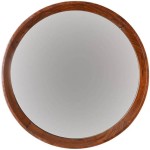How To Screen Mirror On Older Samsung Smart TVs
Screen mirroring, the ability to wirelessly display the content of a smartphone, tablet, or computer on a television screen, has become a standard feature in modern smart TVs. However, navigating this feature on older Samsung Smart TVs can sometimes present a challenge. This article seeks to provide a comprehensive guide to screen mirroring on older Samsung Smart TVs, covering various methods and troubleshooting common issues.
Understanding Screen Mirroring Technologies
Before delving into the specific steps, it's essential to understand the different screen mirroring technologies involved. Older Samsung Smart TVs may support one or more of the following:
- Miracast: A peer-to-peer wireless screencasting standard that allows devices to discover and connect directly.
- DLNA: Digital Living Network Alliance, enables sharing of media files (photos, videos, music) across devices on the same network. While not true screen mirroring, it offers a similar function for media content.
- AllShare Cast: Samsung's proprietary screen mirroring technology, typically found on older models. It's similar to Miracast but limited to Samsung devices.
Identifying Your Samsung TV's Capabilities
The first step is to identify the specific screen mirroring technologies supported by your Samsung Smart TV. This information can usually be found within the TV's settings menu. Look for options related to "Network," "Screen Mirroring," "AllShare Cast," or similar terms. Consulting the TV's user manual or the Samsung support website can also provide specific details for your model.
Screen Mirroring from Android Devices
Mirroring from an Android device to an older Samsung Smart TV can be achieved through several methods:
- Using Smart View: Many Samsung smartphones and tablets come pre-installed with the Smart View app. This app simplifies the connection process by automatically searching for compatible devices on the network. Once the TV is detected, select it within the Smart View app to initiate the mirroring process.
- Through the Quick Settings Menu: Some Android devices offer a screen mirroring option directly within the quick settings menu. Swiping down from the top of the screen reveals this menu, often labeled "Screen Cast," "Smart View," or a similar term. Selecting this option will scan for nearby compatible devices, including your Samsung TV.
- Via Miracast: If both your Android device and the TV support Miracast, you can connect directly without needing a specific app. Access the screen mirroring or cast settings within your Android device's settings menu, and search for available devices. Select your Samsung TV to establish the connection.
Screen Mirroring from iOS Devices (iPhones and iPads)
Screen mirroring from iOS devices to older Samsung Smart TVs generally requires slightly different approaches:
- Using Apple AirPlay (if supported): While AirPlay is primarily designed for Apple TV, some older Samsung TVs offer limited AirPlay support. Check your TV's specifications to see if it's included. If it is, ensure both devices are on the same Wi-Fi network and swipe up from the bottom of your iOS device (or down from the top right corner on newer models) to access the Control Center. Tap "Screen Mirroring" and select your Samsung TV.
- Through Third-Party Apps: If your Samsung TV doesn't natively support AirPlay, several third-party apps on the App Store can facilitate screen mirroring. These apps typically require installing a corresponding app on the TV or using a web browser on the TV. Be sure to research reputable apps and follow the respective instructions for setup.
Screen Mirroring from Windows PCs
Mirroring a Windows PC screen to an older Samsung Smart TV can be achieved using the following methods:
- Using the Connect App: The built-in Connect app in Windows 10 and 11 allows wireless projection to compatible displays. Press the Windows key + K to open the Connect panel. The app will scan for available devices, including Miracast-enabled TVs like your Samsung TV.
- Through Miracast Directly: If your Samsung TV supports Miracast, you can connect directly from your Windows PC's settings. Navigate to Settings > System > Display and look for the "Connect to a wireless display" option. Select your Samsung TV from the list of available devices.
Troubleshooting Common Issues
If you encounter difficulties with screen mirroring, consider the following troubleshooting steps:
- Network Connectivity: Ensure both devices are connected to the same Wi-Fi network and that the network is functioning correctly.
- TV Firmware Updates: Check for firmware updates for your Samsung TV. Outdated firmware can sometimes cause compatibility issues.
- Device Compatibility: Verify that both your source device (smartphone, tablet, PC) and your Samsung TV support the chosen screen mirroring technology.
- Restarting Devices: A simple restart of both the source device and the TV can often resolve minor connection problems.
- Checking for Interference: Other wireless devices operating on the same frequency band can interfere with screen mirroring. Try minimizing the use of other devices during the process.
Utilizing DLNA for Media Sharing
While not strictly screen mirroring, DLNA functionality allows sharing media files (photos, videos, music) from your device to your older Samsung Smart TV. This can be a useful alternative if true screen mirroring isn't functioning correctly. Many media player apps on smartphones, tablets, and PCs support DLNA streaming. Ensure that your Samsung TV's DLNA feature is enabled and look for the "Cast" or "Share" option within your media player app. Select your Samsung TV as the target device. This will stream the media content to the TV via your home network.
Exploring Alternative Connection Methods
If wireless screen mirroring proves challenging, consider alternative connection methods:
- HDMI Cables: A wired HDMI connection offers a reliable and high-quality alternative. Connect an HDMI cable from your device's HDMI output to an available HDMI input on your Samsung TV. Select the corresponding HDMI input on your TV using the remote control.
- Wireless HDMI Adapters: Wireless HDMI adapters offer a compromise between wireless convenience and wired reliability. These adapters typically consist of a transmitter that connects to your device's HDMI port and a receiver that connects to the TV's HDMI port. They transmit the video and audio signals wirelessly.

How To Enable Screen Mirroring On A Samsung Galaxy Device

What Is Screen Mirroring And How Do I Use It With My Samsung Tv Mobile Device

Displaying Your Mobile Device Screen On The Tv Samsung Levant

2024 Samsung Smart Tv Screen Mirroring A S4 With No Dongle Mirror

Screen Mirror To Samsung Tv Android Mac Ios Free App

Updated How To Screen Mirror Samsung Tablet Tv

Screen Mirroring On Samsung Smart Tv Tutorial

How Can I View My Samsung Smartphone Screen On Tv Ie
:max_bytes(150000):strip_icc()/001-how-to-connect-samsung-phone-to-samsung-tv-4589275-bda5d3365fef49b5bf563367eb762491.jpg?strip=all)
How To Connect A Samsung Phone Tv

Solved Why Is Screen Mirroring Not Working On My Samsung Tv








